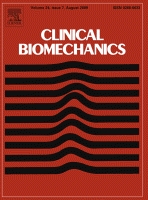Publications

Changes in viscoelastic properties of skeletal muscles induced by subthalamic stimulation in patients with Parkinson’s disease
Authors: T. Rätsep, T. Asser
Affiliations: Department of Neurology and Neurosurgery, University of Tartu, Estonia
Journal: Clinical Biomechanics - February 2011, Volume 26, Issue 2, Pages 213–217 (DOI: 10.1016/j.clinbiomech.2010.09.014)
-
Field & Applications:
- Medical
- Neurology
- Neurodegenerative disorder
Background
Objective measurements would be useful to document the effect of deep brain stimulation in alleviating rigidity in patients with Parkinson’s disease. The aim of the study was to examine the changes of viscoelastic properties in skeletal muscles as indicators of rigidity.
Methods
Six patients in an advanced stage of Parkinson’s disease participated in the study. The study took place in the off-medication conditions after one night of drug withdrawal. The wrist rigidity was examined according to the Unified Parkinson’s Disease Rating Scale in both sides. Myotonometry (Myoton) was used to determine stiffness and elasticity in extensor digitorum muscles bilaterally. The measurements were repeated and compared during the stimulation-on and stimulation-off periods.
Findings
A comparison of mean clinical motor scores revealed a significant improvement of parkinsonian symptoms due to brain stimulation. In particular, arm rigidity improved on average from 2.83 (1–4) in stimulation-off phase to 1.17 (0–2) in stimulation-on phase (P<0.05). The mean values of elasticity and stiffness were not significantly different in stimulation-on and stimulation-off conditions. The patients with elevated clinical rigidity scores had higher mean values of stiffness (262.5 vs 211.0; P<0.05) but the differences in elasticity were not significant.
Increased rigidity is associated with increased values of viscoelastic stiffness. This paper supports the use of myotonometry for objective quantification of rigidity and in the future, this tool could prove helpful for optimizing deep brain stimulation settings in patients with Parkinson’s disease.


